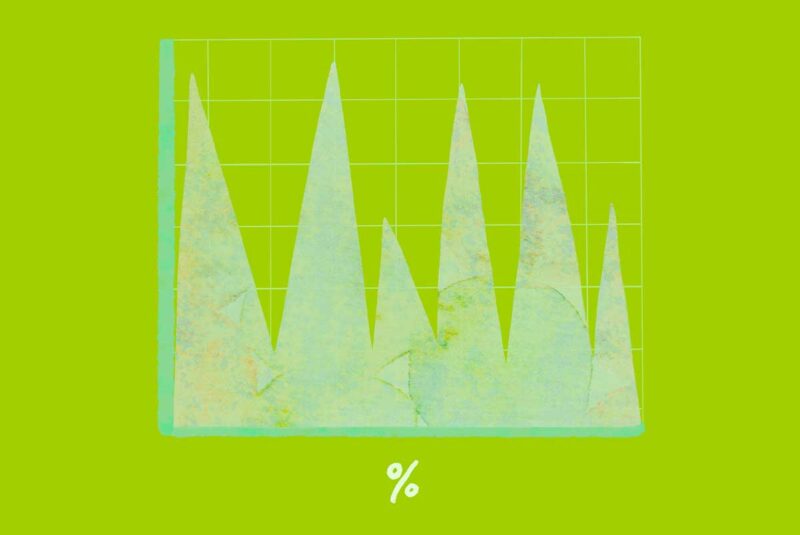When it comes to having access to a retirement savings plan, it seems like the deck is stacked against self-employed individuals. Businesses with employees have access to a wide range of different types of qualified retirement plans for owners and employees, but the options are more limited for freelancers, consultants and other self-employed professionals.
In fact, only 55% of self-employed workers regularly save for retirement.[1]
It’s usually pretty easy for employees to participate in a retirement plan: Just sign up for the plan with the HR department, decide how much money to contribute to the plan each pay period, and how to invest the money (in stocks, bonds, mutual funds, etc.). Employees may also receive a match from their employer of a percentage of the money they contribute to their plan.
What Retirement Plans Are Available to Self-Employed Individuals?
If you work for yourself, saving for retirement takes a little bit more effort. Fortunately, options do exist for self-employed individuals to stash cash in a retirement account on a tax-advantaged basis. Here are three qualified retirement plans that tend to be popular among the self-employed:
1. Individual Retirement Account (or IRA)
IRAs have been around since the 1970s; in fact, they were the first plan sponsored by the federal government to help individuals save for retirement themselves. Opening and funding an IRA is the simplest way for a self-employed individual to save for retirement on a tax-advantaged basis. There are two different types of IRAs, each offering the opportunity for self-employed individuals to benefit from long-term growth in a tax-sheltered environment.
A traditional IRA lets you make contributions on a pre-tax basis — this means that the amount of money you contribute may be able to be deducted from your income when you file your tax return, thus lowering your current taxes. You will then pay taxes on the money when you start making distributions in retirement.
With the popularity of traditional IRAs soaring, Congress authorized a new type called a Roth IRA (named after Senator William Roth). It differs from a traditional IRA in two key respects: First, contributions are made on an after-tax (not pre-tax) basis, so you don’t get a current tax deduction for them. However, the flipside of this is that these contributions grow tax-free and no taxes are due when the money is withdrawn in retirement. For many self-employed individuals, this more than offsets the loss of a current tax deduction. In 2022, you can contribute up to $6,000, or $7,000 if you’re at least 50 years of age, to a Roth IRA, traditional IRA or combination of the two.[2]
2. Simplified Employee Pension IRA (or SEP-IRA)
A SEP-IRA is essentially the same thing as a traditional IRA, but with one key difference: It features a much higher annual contribution limit. Depending on your income level, you can contribute almost 10 times as much money to a SEP-IRA this year — up to $61,000, or 25 percent of your net income, whichever is less.[3] Therefore, if you have a very successful year in your business, a SEP-IRA will enable you to sock away much more money for your retirement than a traditional or Roth IRA. You could even contribute to a SEP-IRA and a Roth IRA if you want and take advantage of the after-tax status of the Roth while possibly enjoying a current tax deduction with the SEP-IRA.
3. Solo-401(k)
Also referred to as a one-participant 401(k) plan, this is a streamlined version of the popular 401(k) plan that has become synonymous with employer-sponsored retirement plans. It is designed to cover just a self-employed individual with no employees and his or her spouse. Since there are no other employees covered by the plan, the business does not have to perform the complex non-discrimination testing that is required for a traditional 401(k) plan. As a self-employed individual, you can make contributions to a solo-401(k) plan as both an employer and employee. These include elective employee deferrals of up to $20,500 (or $27,000 if you’re at least 50 years of age) in 2022, and non-elective employer contributions, with the limit determined by making a special computation. The limit for total contributions to a solo-401(k) in 2022 is $61,000.[4]
Winnie Sun is a registered representative with, and securities offered through LPL Financial, member FINRA/SIPC. Investment advice offered through Sun Group Wealth Partners, a registered investment advisor and a separate entity from LPL Financial.
The Short Version
- Opening and funding an IRA is the simplest way for a self-employed individual to save for retirement on a tax-advantaged basis.
- A SEP-IRA is essentially the same thing as a traditional IRA, but with one key difference: It features a much higher annual contribution limit.
- As a self-employed individual, you can make contributions to a solo-401(k) plan as both an employer and employee.
Transamerica Center for Retirement Studies. “Self-Employed: Defying and Redefining Retirement.” Retreived April 2022 from https://transamericacenter.org/docs/default-source/retirement-survey-of-workers/tcrs2019_sr_self-employed-retirement.pdf
IRS. “Retirement Topics – IRA Contribution Limits.” Retrieved April 2022 from https://www.irs.gov/retirement-plans/plan-participant-employee/retirement-topics-ira-contribution-limits
IRS. “SEP Contribution Limits (including grandfathered SARSEPs).” Retrieved April 2022 from https://www.irs.gov/retirement-plans/plan-participant-employee/sep-contribution-limits-including-grandfathered-sarseps
IRS. “One-Participant 401(k) Plans.” Retreived April 2022 from https://www.irs.gov/retirement-plans/one-participant-401k-plans




